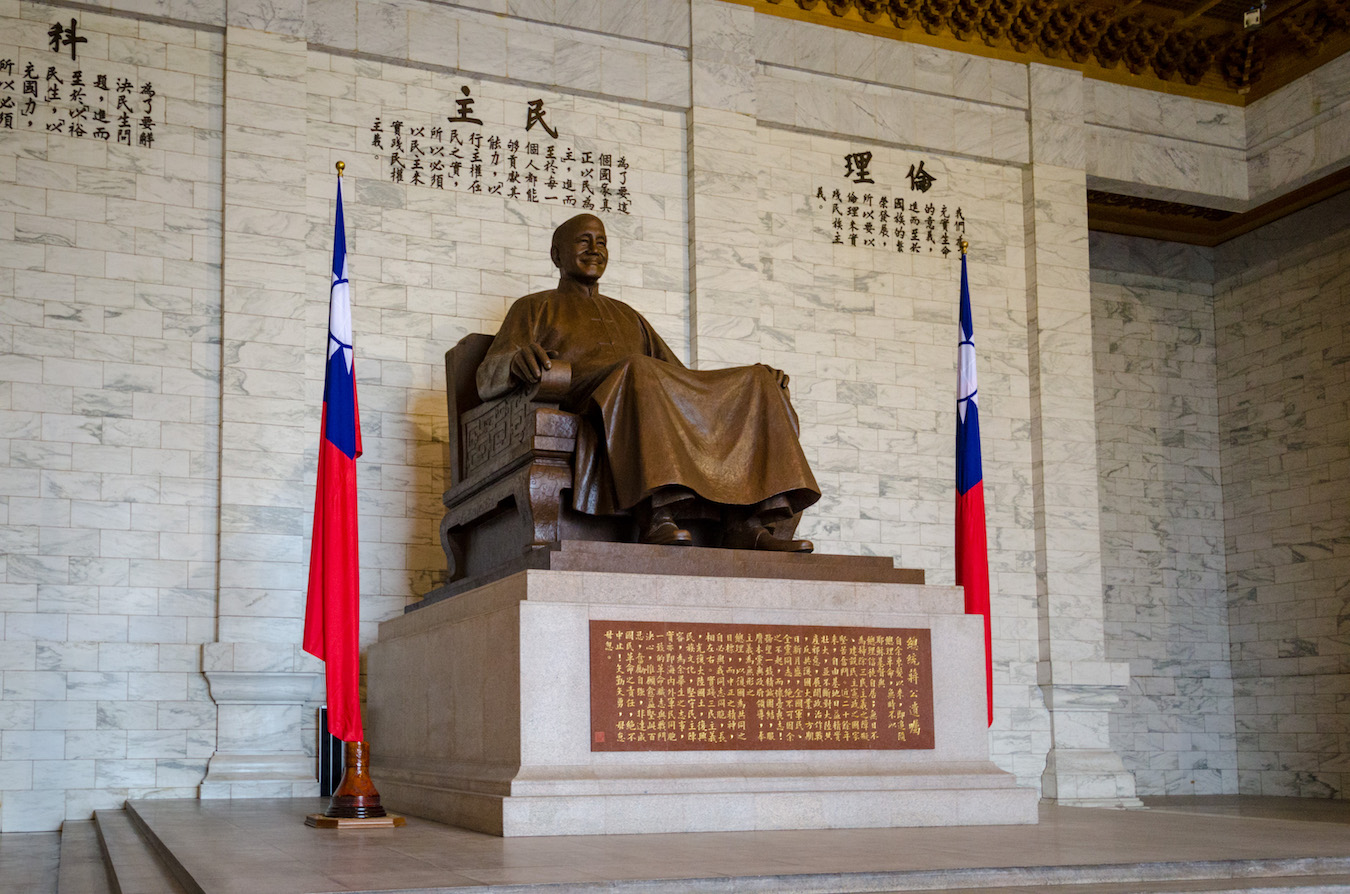by Brian Hioe
語言:
English
Photo Credit: Outlookxp/WikiCommons/CC BY-SA 3.0
SOME FEVERISH MEDIA reporting in English, from pan-Blue-leaning media outlets or journalists, has honed in on the prospect of the 760 remaining statues of Chiang Kai-shek being removed from public spaces. This is claimed to be a move likely to provoke China, in that Chiang is seen as a figure associated with China–this despite, of course, that Chiang and the KMT came to Taiwan after their military defeat by the CCP in the Chinese Civil War.
Questions regarding the pace of statue removal were recently raised by DPP legislator Huang Jie, in line with broader efforts to realize transitional justice in Taiwan. For those who suffered during the White Terror and their descendants, Chiang Kai-shek status across Taiwan are a symbol of how official history still commemorates Chiang as well as his successor and son, Chiang Ching-kuo, as a hero rather than as a dictator that ruled over Taiwan with an iron first for decades.
Huang further brought up the question of what to do with the 6.3-meter Chiang Kai-shek statue in the Chiang Kai-shek Memorial. Before its dissolution in 2022, the Transitional Justice Commission’s recommendation regarding what to do with the statue was for it to be removed and for the architecture of the Chiang Kai-shek Memorial to be changed, seeing as it is clearly built as though it were a temple to Chiang.
Yet Huang’s questions were not a sign of an impending push by the DPP to rid Taiwan of Chiang Kai-shek statues, but raised the issue of statue removals that were already slated to take place and why the pace of such removals was still slow. Attempts to frame the DPP as about to embark on a mass wave of statue removals would be an attempt to fearmonger about the incoming Lai administration or the outgoing Lai administration, suggesting that Tsai might prove similar to her predecessor as DPP president Chen Shui-bian in attempting to rename ROC public institutions en masse in a more pro-independence direction before leaving office, or that Lai would do this after taking office.
One reason for the slow progress to date on the removal of statues that were already planned to be demolished was the lack of budget for the task, given that subsidies provided to the military to remove statues only are up to 100,000 NT. Likewise, there has been some pushback from the military itself, in that the military has long been a bastion of ROC nationalism.
Minister of Defense Chiu Kuo-cheng, despite being a Tsai administration appointee, has publicly questioned why there is a need to remove Chiang statues if they are not illegal. Ironically, however, at a time in which the ROC military struggles with recruitment among young people who are not sold on its historically pan-Chinese nationalist identity, the military’s reluctance to change its image when it was historically the KMT’s enforcer in authoritarian times, this points to how the military itself is reluctant to part with authoritarian symbols that do not resonate with Taiwanese people today.
Chiu’s comments gesture toward how many public institutions, whether in the military, schools, or other bodies, have largely shrugged off efforts at removing Chiang Kai-shek statues. And while the most visible Chiang Kai-shek statue in the nation is that in the Chiang Kai-shek, it is unlikely that the DPP would be willing to expend political capital on the issue currently. The DPP, of course, did not attempt to maintain the Transitional Justice Commission as a permanent institution, but eventually dissolved it.
Though the Lai administration claims that efforts to realize transitional justice will continue, Lai is expected to play it safe in the early months of his term. Lai, of course, is conscious of how his past history of pro-independence statements has been used to paint him as a diehard ideologue as Chen Shui-bian was sometimes perceived internationally. Consequently, Lai is also likely to avoid moves on transitional justice involving statue removals.
Indeed, one wonders if the issue is of particular importance to China. Meetings between KMT officials and CCP officials, such as the meeting between former president Ma Ying-jeou and current Chinese president Xi Jinping earlier this month, still take place by citing the special historical relationship between the two parties. Yet, while China and the KMT have hit out at the DPP over what is framed as the DPP’s efforts at “desinicization” and to foment “cultural Taiwanese independence.” The historical legacy of Chiang Kai-shek is not exactly an issue over which either the CCP or KMT has gone to bat. More generally, the KMT seems to prefer emphasizing the historical legacy of Chiang Ching-kuo at present, framing Chiang as the father of democracy in Taiwan–this includes Chiang Wan-an, the self-proclaimed great-grandson of Chiang Kai-shek, who serves as the KMT mayor of Taipei.


